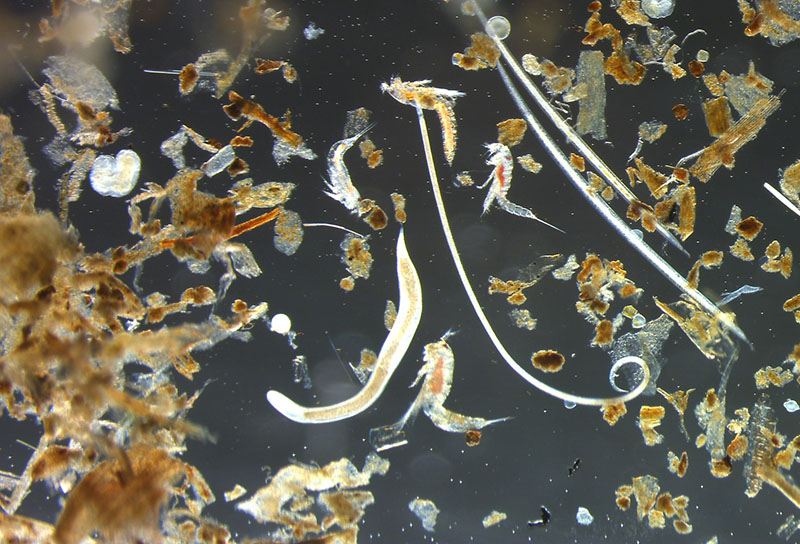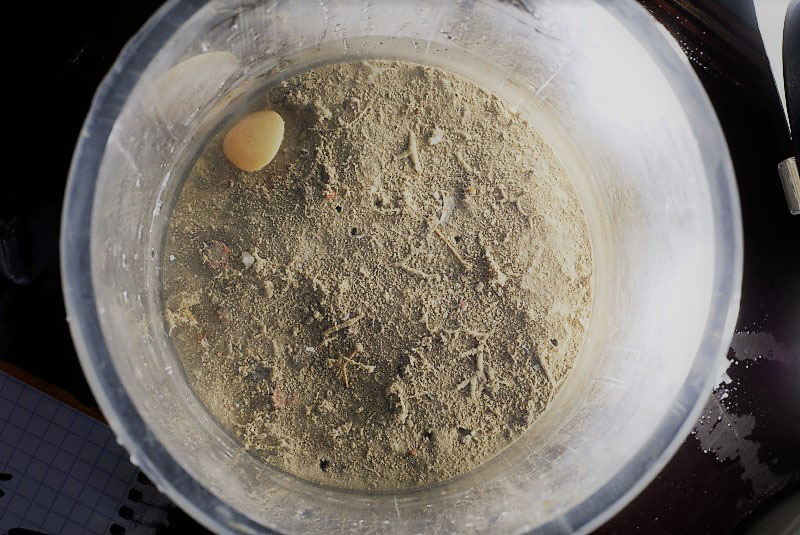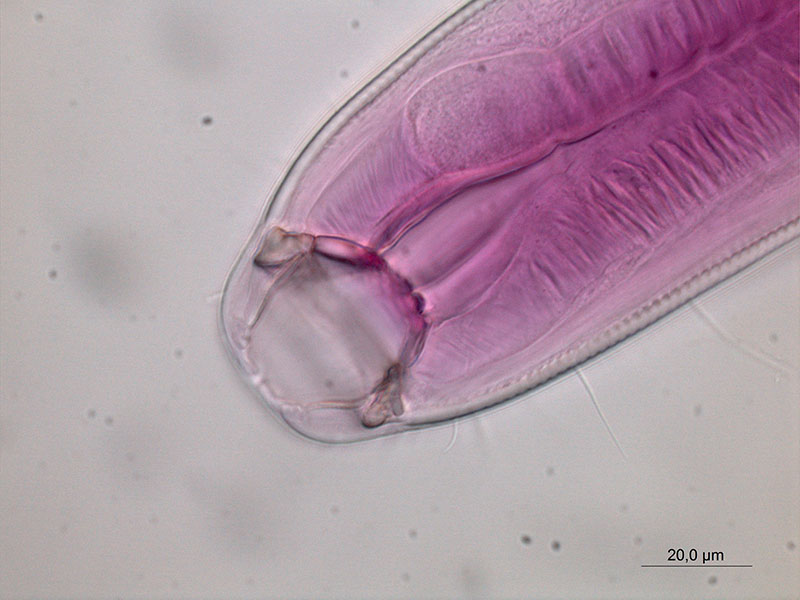What are “marine meiofauna”?
Marine meiofauna are a group of animals small enough to live in between the grains of sand and mud on the seafloor.

After sediment samples are washed and the meiofauna has been extracted from most of the sediment grains, the microscopic organisms can be seen under the stereomicroscope. Here is an image of mainly nematodes (roundworms) and copepods (small crustaceans) from a coastal sample. Image courtesy of Jeroen Ingels, FSUCML. Download image (jpg, 1.1 MB).
Marine meiofauna are typically smaller than 1 millimeter (0.04 inches) and larger than 32 micrometers (32/1000 of a millimeter). These animals encompass a wonderfully diverse and very important, yet often overlooked part of marine ecosystems. They can be food sources for small fishes, large worms, and crabs that sift through sediments, for instance. They themselves feed on many different small food items such as bacteria, detritus, and other microscopic organisms, and can be highly specialized in their diet, and hence form an important link in the food web. Many meiofauna move through the sediment, secrete trails of mucus, and can stimulate growth of bacteria, which helps with moving nutrients and stabilizing the sediment grains, keeping them stuck together and helping to avoid erosion by tides and waves.

This image shows the top view of a core of sediment retrieved from the deep sea. A small bivalve and numerous intricate structures are visible on the surface, but invisible between and underneath them are many tiny creatures. Within this core many hundreds of animals belonging to dozens of species can be found Image courtesy of Jeroen Ingels, FSUCML. Download image (jpg, 312 KB).
Meiofauna are likely the most diverse group of animals in the ocean, with more than 25 phyla (there are only 35 animal phyla on Earth!) and tens of thousands of species (scientists are not sure how many there actually are, many species are yet to be discovered). Meiofauna also represent the most abundant group of animals in the ocean, particularly nematodes and copepods, which can be found in very high numbers. To give an example, a rough estimate would suggest 1021 (sextillion!) nematodes live in the ocean.
Although they can be found pretty much everywhere, different species of meiofauna can be found in different environments and respond differently to different disturbances and stressors. As such, they can provide insight into the health of the current ocean. These characteristics mean they can be used effectively in comparative works, like environmental assessments. Scientists have suggested that meiofauna taxa are excellent environmental indicators in biomonitoring campaigns, where changes in the environment or human stressors such as pollution are investigated in space and over time.

Photograph of a free-living nematode under a compound microscope. The red stain (Rose Bengal) is used to see the organs and other structures more clearly under the microscope. This specimen has distinct jaws and a muscular esophagus, suggesting this species preys on or scavenges on remains of other meiofauna organisms. Image courtesy of Jeroen Ingels, FSUCML. Download image (jpg, 7.2 MB).
Nematodes, a diverse taxon of meiofauna, are one of the most-used indicators of environmental health in the literature due to their abundance, their well-documented responses to pollution events, and their relative ease of study. Through extensive field surveys and laboratory experiments, scientists have established widely used environmental assessment metrics based on the presence, absence, or abundance of meiofauna, the ratios of the meiofauna taxa that are present, and biomass measurements. Recently there has been a rise in the number of companies that conduct benthic (seafloor) surveys prior to and after major coastal or deep-sea projects with human activity (mining, offshore construction, beach suppletion, etc.) to assess how the activity changes environmental health.
Published on May 19, 2022
By Aaron Ridall and Jeroen Ingels, Florida State University
Relevant Expedition: Combining Habitat Suitability and Physical Oceanography for Targeted Discovery of New Benthic Communities on the West Florida Slope